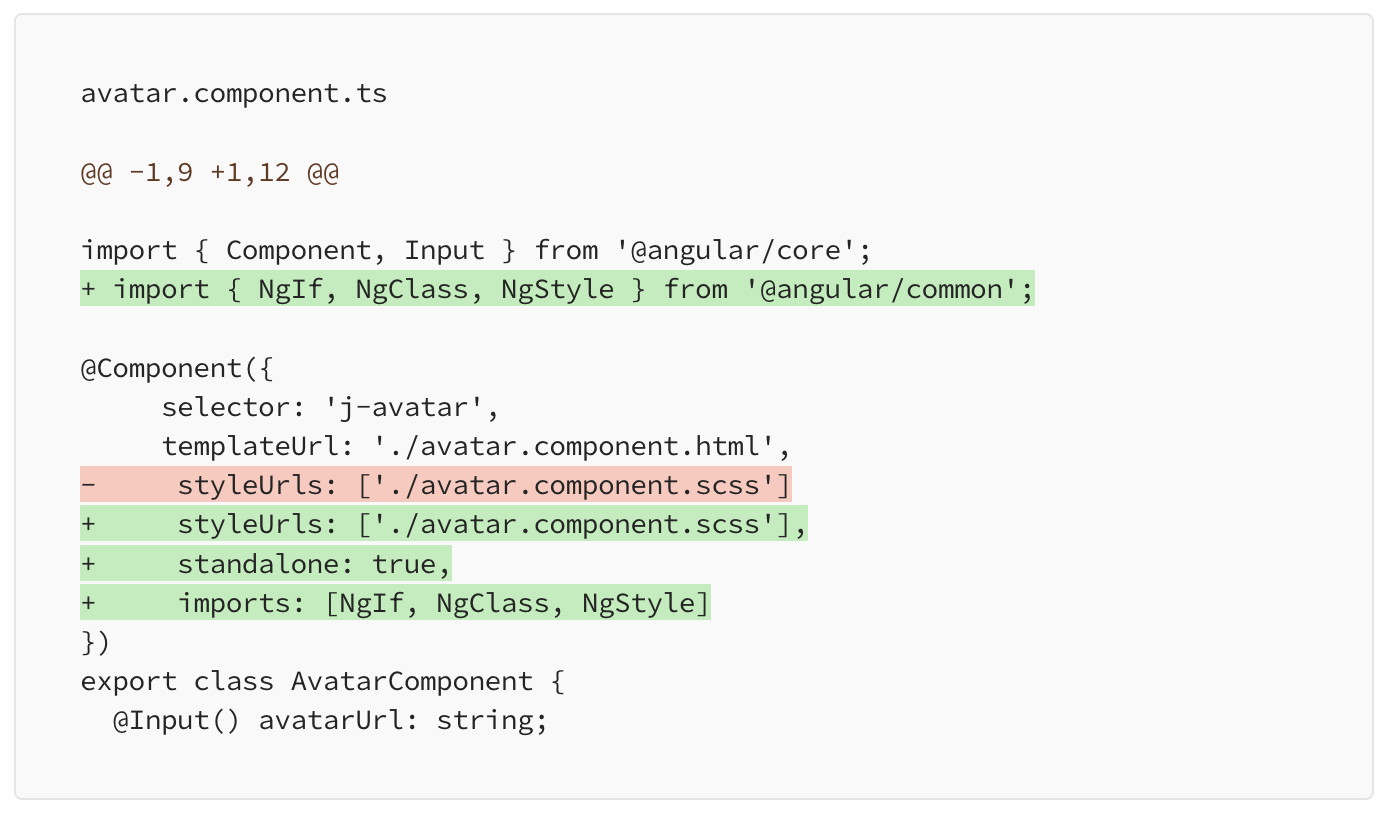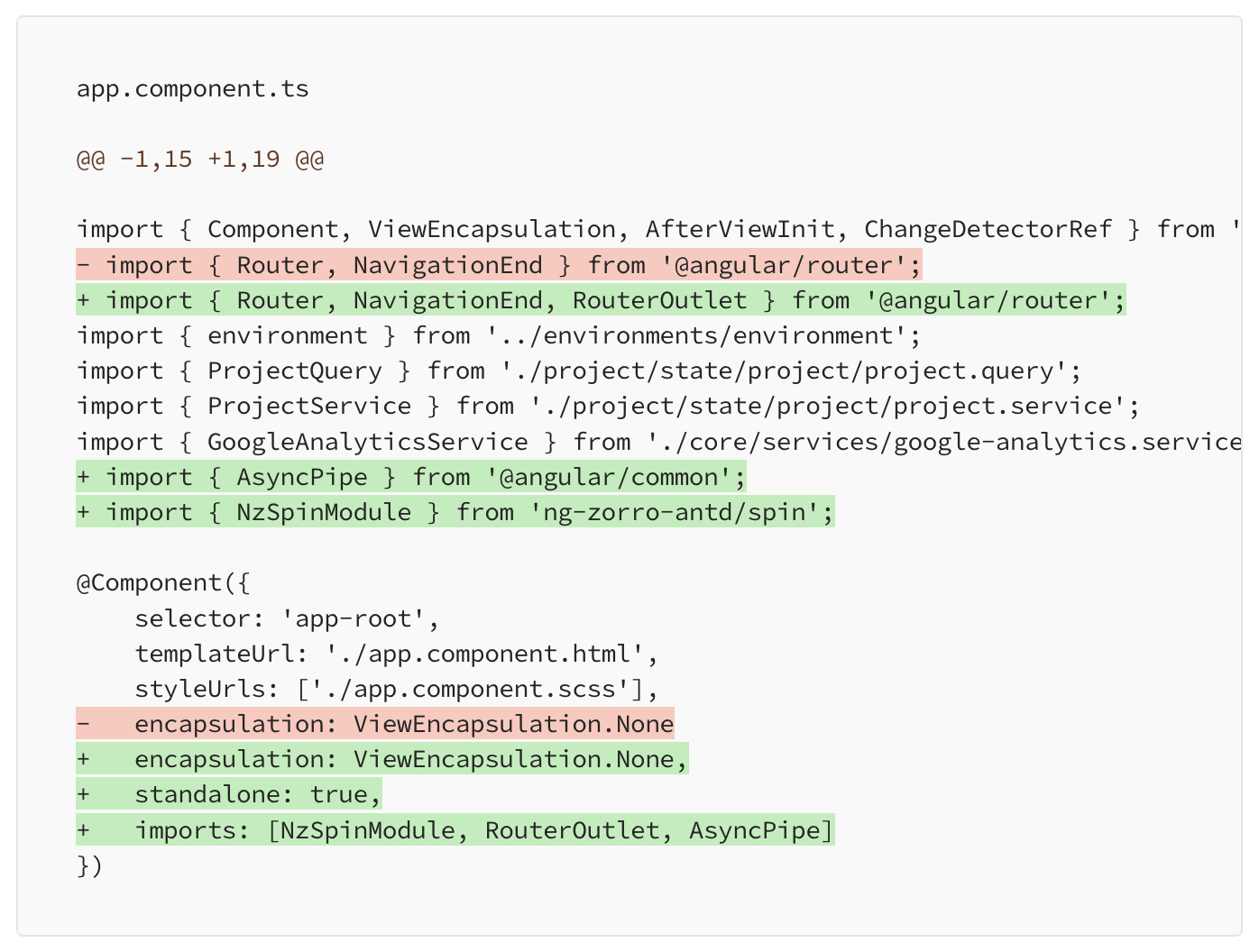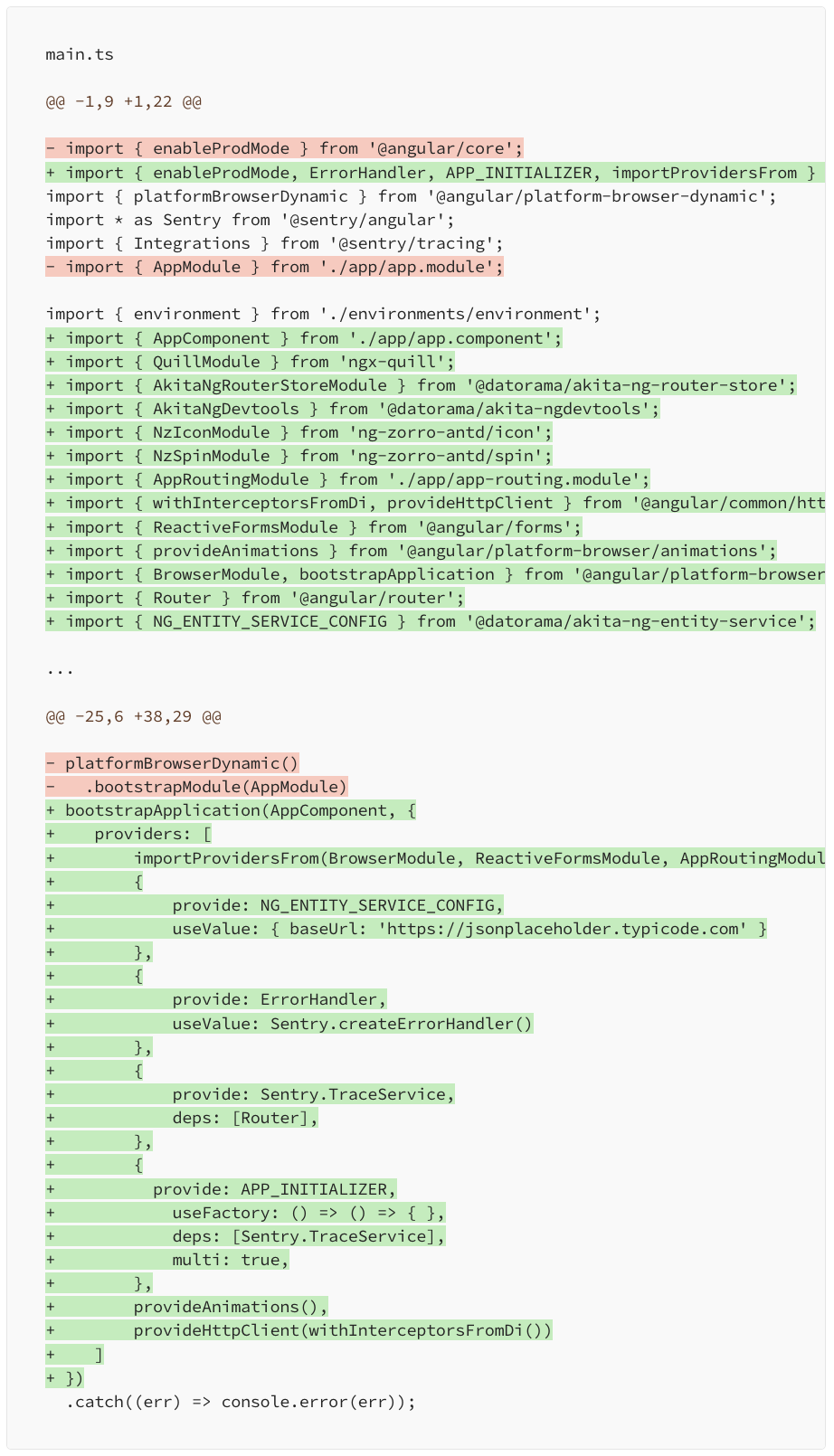In Angular 15, the new standalone APIs graduated from developer preview and are now part of the stable API. To support developers transitioning their apps to standalone APIs, the Angular team provided two new tools: a standalone migration schematic and the standalone ng new collection. In this post, we will go over both of them along with an example of the standalone migration schematic put to use in an awesome open-source project.
Standalone Migration Schematic
Available from version 15.2, this schematic’s main goal is to help developers convert existing projects to the new standalone APIs. Along with it, the team created a great standalone migration guide. As explained in the guide, the schematic aims to convert as much code automatically, but it may require some manual fixes and updates by the project author, as we will see later in this post.
Pre-requisites
Before running the schematic, the project author must ensure that the project:
- Is using at least Angular 15.2.0
- Builds without any compilation errors
- Is on a clean Git branch
Standalone Migration Schematic
The standalone migration consists of the following three steps (referred to as modes by the schematic):
- Convert declarations for all components, directives, and pipes to standalone
- Remove unnecessary NgModules.
- Switch to standalone bootstrapping API.
In order to run the schematic, use the following command.

After running the command, the CLI will prompt you with the three migration steps as can be seen in the image:

Using the arrow keys, select the steps and make sure you run them in the specified order (convert-to-standalone first, then prune-ng-modules, and lastly standalone-bootstrap). Along with this, it is important to make sure the project builds correctly between each step.
Schematic Options
The schematic provides options to pass to the command in case you want to be more specific about what you want to be done by the migration.
1. mode: This option accepts the transformation that is going to be performed. The available choices here are the following:

So for example, if you were to run the first step of the schematic using the mode option in the command, you would run:

2. path: This option accepts the path to migrate relative to the project root. This option is particularly useful if you want to migrate sections of your project incrementally.
For example, if you were to run the first step of the schematic on a specific feature, let's say called payments for instance, you could run:

⚠️ Important Note: While trying the schematic myself, I found that in order for this command to work when pointing to a specific path, the targeted folder must contain a NgModule.
Let's try it
In order to get my hands on it to be able to use it and after some research over at Github, I found the perfect OS project to try it on: Angular Jira Clone by Trung Vo. This was an excellent fit for this not only because it is an amazing project, but also because it is a great example of modern, real-world Angular codebase and it is on Angular 13, which is what I needed to test the schematic.
In the first step, as explained in the pre-requisites section of this post, I migrated the project to Angular version 15.2 (the minimal version needed to use the schematic), I ran each of the migration steps using the schematic. The following is a walkthrough of each of the steps taken, what each step does, and my findings on each. You can see all of the steps taken in this pull request.
Step 1- Convert declarations to standalone
After running the ng generate @angular/core:standalone --mode convert-to-standalone command, the migration schematic did the magic.
In this step, I found the schematic does three things:
- It converts all components, directives, and pipes into standalone by adding the imports array with the component’s dependencies, which it correctly infers from the module the component is declared.
- It updates the module the component, directive, or pipe belonged to, it removes it from its declarations, and adds it to its imports instead.
The following is an example of all of these changes done in one of the components of the project, the avatar.component.ts. - As can be seen in the code snippet, the standalone:true flag was added to the component, and the imports were updated accordingly.
The following is an example of all of these changes done in one of the components of the project, the avatar.component.ts.
As can be seen in the code snippet, the standalone:true flag was added to the component, and the imports were updated accordingly.

Along with this, the migration schematic step also was smart enough to update the module the avatar component belonged to, remove it from its declarations, and add it to its imports instead.
The AvatarComponent belonged to the JiraControlModule , so this is how the migration changed that particular file.

After running this step, I built the application and everything worked fine. At this point, no modules have been removed yet, or any change on the application’s bootstrapping has been made either, so it was safe to assume the application would build properly.
⚠️ Important Note: As mentioned in the standalone migration guide, “the schematic ignores NgModules which bootstrap a component during this step because they are likely root modules used by bootstrapModule rather than the standalone-compatible bootstrapApplication ."
You can find all the changes made by the migration schematic in this step on this commit.
Step 2- Remove NgModules
When running the command for this step ng generate @angular/core:standalone --mode prune-ng-modules , the migration did not make any changes, even though there were several NgModules that could have been removed.
The standalone migration guide does mention clearly that for this step, it is considered safe to remove a module only if:
- It has no declarations or providers
- It has no bootstrap components
- It has no imports that reference a ModuleWithProviders symbol or a module that can’t be removed
- It has no class members
The NgModules on the project had at least one of the items missing, so for this step, unfortunately, nothing was able to be automated. At this point, I decided to then proceed to step 3.
Step 3- Switch to standalone bootstrapping API
In this last step, I ran the ng generate @angular/core:standalone --mode standalone-bootstrap command. For this one, it successfully migrated the bootstrapping of the application. In this step, the migration successfully did the following:
- Converted any usage of bootstrapModule to the new standalone bootstrapApplication
- Added the standalone: true to the root component
- Deleted the root NgModule
- Added the providers and imports the root module had to the new bootstrap call
The following were the changes made:
- app.module.ts file was deleted


You can find all the changes made by the migration schematic for this step on this commit.
After doing this step, the application was built successfully.
Wrapping up the standalone migration
After the completion of all three steps, I went back and did the removal of unnecessary NgModules manually, which you can see in these commits (part 1 and part 2). It was then that I realized the migration schematic does not migrate the routing on the project to use the new standalone router API, so I went and did that manually as well in order to have a completely standalone application on this commit.
Testing
Regarding testing, this particular project has only part of it with test coverage. After running the migration, I found that the module.spec.ts files (unit tests for module files) were not removed. This is, though, a known limitation the migration guide does specify.
After having done that, the 38 tests the project had run successfully, so that speaks well of the schematic on this front.
Along with the one just mentioned, the guide also outlines the following common problems the schematic has:
- Compilation errors — if the project has compilation errors, Angular cannot analyze and migrate those correctly.
- Files not included in a tsconfig — the schematic determines which files to migrate by analyzing your project’s tsconfig.json files. The schematic excludes any files not captured by a tsconfig.
- Code that cannot be statically analyzed — the schematic uses static analysis to understand your code and determine where to make changes. The migration may skip any classes with metadata that cannot be statically analyzed at build time.
Overall, I had a very positive experience with the standalone migration schematic and highly recommend it. It felt like magic, especially with the first migration step, where it does an amazing job at converting components, directives, and pipes into standalone.
Standalone ng new collection
What if we are creating a project from scratch and we want it to use standalone APIs? The ng new collection added by the team on v16 tooling improvements has you covered. You can do it by running this simple command, substituting project-name accordingly:

By doing this, the CLI you’ll get a much simpler project output completely standalone, without any NgModules. Along with this, all the generators in the project will produce standalone directives, components, and pipes as it can be seen on the snippet below:

Sneak peek into the future: Angular 17
In the next angular release, version 17, the CLI will create standalone applications by default, without the need to pass thestandalone flag.
I hope you found this post about Angular’s improved tooling useful. Feel free to add your experience with the standalone migration schematic in the comments as it would be exciting to read about how it worked on other and bigger Angular apps.


